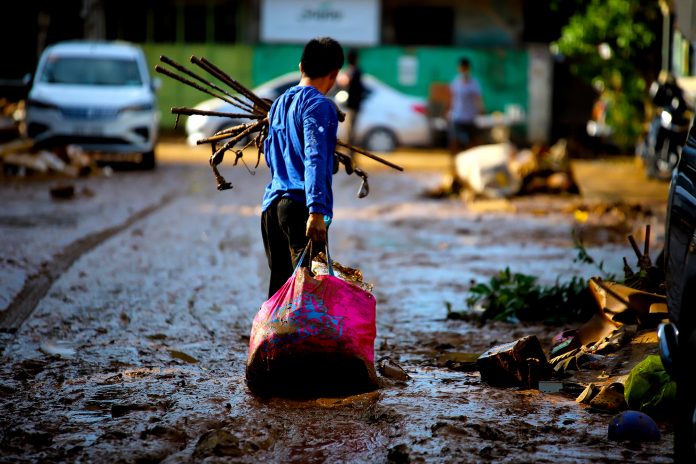Thirty-three years ago all barangays were obligated to collect rainwater. Hardly any has complied.
The aim of the Rainwater Collector and Springs Development Act of 1989, R.A. 6716, is simple: Reduce floods during the wet season, and have water during the dry. Flooding and drought are of crisis proportion today. Won’t anyone act yet?
The Department of Public Works and Highways was supposed to pinpoint the lowest areas of every barangay. Rainwater catchments shall be dug up there. The wider and deeper, the better. Canals can be directed and drain pipes laid down onto the impoundments.
Barangays can have food. Plant vegetables and fruits around the impoundments. With surrounding soil always wet, harvest will be plenty. Seed the ponds with tilapia, carp, catfish and mudfish. Probably rock crabs and frogs too. Those will prevent the spread of mosquitoes. Use vegetable trimmings and kitchen peelings for feeds. Also manure from a chicken coop built atop the pond. Richer barangay residents can donate growth pellets.
Impoundments can be barangay recreation parks. Shade trees can be planted, and huts and umbrella tables set up. If the pond is big enough, put paddle boats. Charge upkeep fees.
Barangays can have drinking water. The Department of Science and Technology, community engineers and technology students can put their heads together. Filter chambers can be designed to clean the water. Before the final chamber can be one with clear enough water for showers, toilets and dishwashing as picnic amenities.
Water impounding has long been practiced. From the air in Australia’s arid zones, one can spot series of giant “turkey nests” on hilltops. For irrigation, water is released into canals spiraling down the hillsides, gathering momentum, to gush onto farms. Former Representative Felicito Payumo adopted the method in his Bataan home province in the 1980s. He was past president of Engineering Equipment Inc.
For community-level impoundment, consult for free environment lawyer Antonio Oposa. He has dug several in the subdivision where he lives South of Manila. Years ago the Supreme Court affirmed Oposa’s case to compel national and local governments to clean up Manila Bay and surrounding rivers.
Malls, factories, office and residential condos, churches, schools and homes must have their own catchments. Rainwater can be collected from roofs, gutters and downspouts. From the catchments can be derived free water for firefighting, gardening, hosing cars, garages, fences, walls and windows. Such architecture was common in the 1960s. India, Malaysia, Singapore and Thailand copied it.
The typhoon season is upon us. Floods again threaten to destroy lowland homes, shops, cars, furniture, appliances and personal records. Yet mountainside quarrying goes on. The mindset of natural resource bureaucrats is that they’re there to parcel off rock quarries for construction. To hell with the garbage-producing dwellers below.
Behind each quarry is a politico as owner or protector. In Congress they arm-twist environment officials to shut up. Confirmation hearings of cabinet members are ongoing.
Expect outcries due to flooding deaths. Expect the news to die down till next year’s disasters. And so it goes.
At the Marikina Watershed in Rizal thrive quarries and illegal swimming pool resorts. Having carved up the mountains, chopped down trees and diverted riverways, their armed goons control the uplands. Park rangers of Masungi Georeserve in Baras town are being shot at and mauled to scram. Their lives are in danger. “We don’t know how long we can hold the line,” reforestation foundation head Ben Dumaliang laments. He pays the rangers from modest incomes from eco-tourists in the Masungi limestone and rewilding site.
The Minds and Geosciences Bureau insists that there will always be floods in the valley of Marikina, San Mateo, Cainta and Quezon City below. Yes, but the quarries up there worsen and hasten the floods. Scientists from the National Museum, University of the Philippines, U.N. Development Programme, International Union for Conservation of Nature, and World Commission on Protected Areas said so. Same with past environment secretaries Angel Alcala, Gina Lopez and Roy Cimatu.
Jarius Bondoc is an award-winning Filipino journalist and author based in Manila. He writes opinion pieces for The Philippine Star and Pilipino Star Ngayon and hosts a radio program on DWIZ 882 every Saturday. Catch Sapol radio show, Saturdays, 8 to 10 a.m., DWIZ (882-AM).
The views expressed in this article are the opinions of the author and do not necessarily reflect the editorial stance of LiCAS.news.









